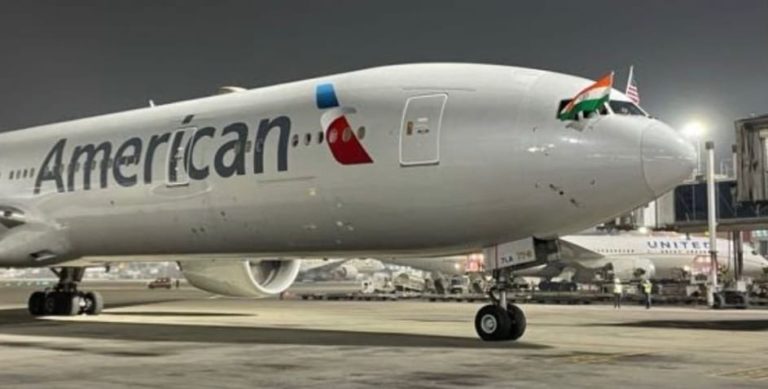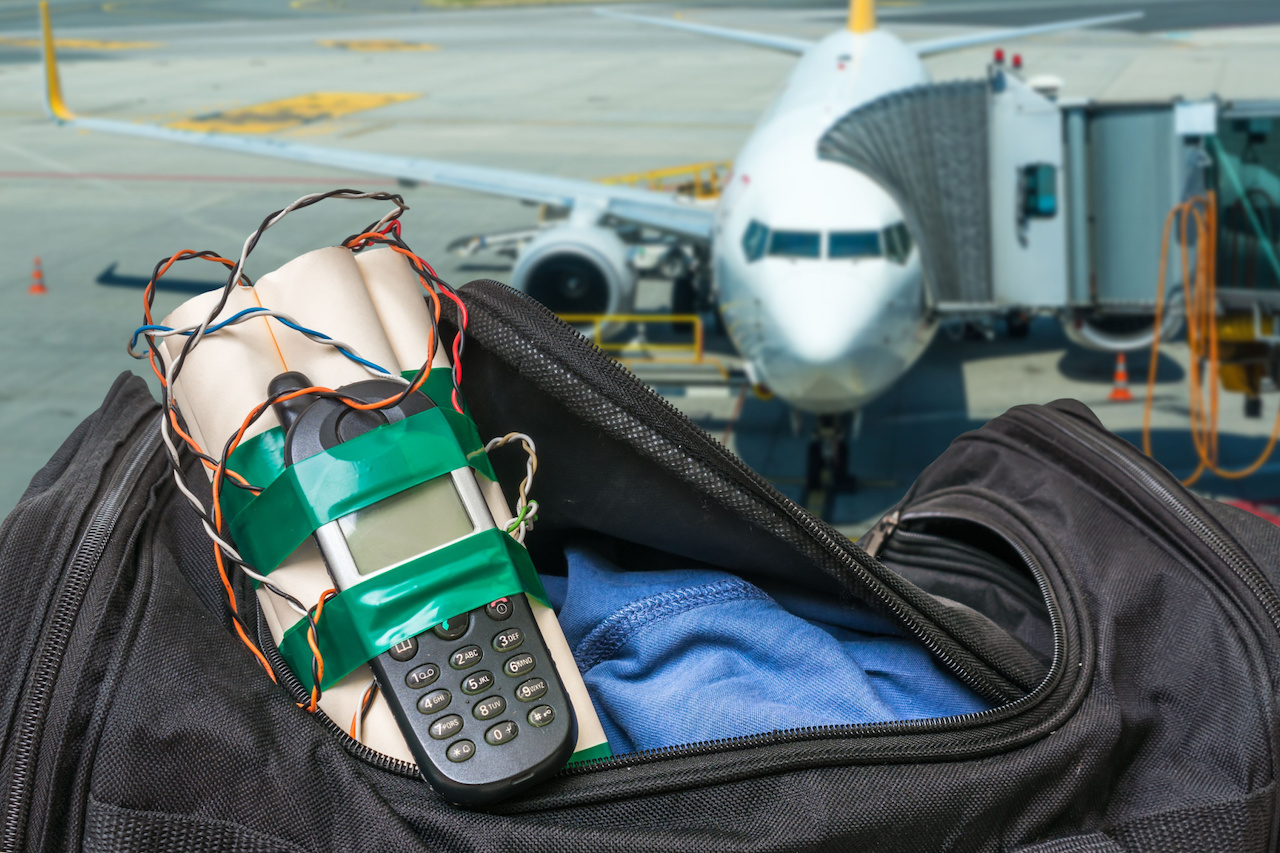From JFK To New Delhi: How A Bomb Threat Diverted American Airlines Flight AA292
The recent bomb threat on American Airlines Flight AA292 highlights growing security concerns in aviation. How can airlines and governments tackle the rising trend of hoax threats?

Aviation is the most secure means of transportation. However, incidents like bomb threats create fear, disrupt operations, and cause significant financial and logistical strain on the passengers and the airlines. The issue of safeguarding the airline industry became more prominent after the recent bomb threat alert on an American Airlines aircraft from JFK International Airport in New York to Indira Gandhi International Airport in New Delhi. The panic that led to diversion because of emergency considerations to Rome also brought into focus safety procedures, rising hoax threats, and the necessity for stricter intervention against such interference.
Incident Overview
American Airlines Flight AA292, which was leaving JFK, was on its way to New Delhi when its crew received a bomb threat on February 23, 2025. An email caused the danger, which led the aviation authorities to act quickly. Italian Air Force Eurofighter Typhoon fighters escorted the flight with 199 passengers and 15 crew members. It was diverted to Leonardo da Vinci International Airport in Rome, where it was safely grounded at approximately 11:15 a.m. ET.
When the jet landed, Italian security officers investigated the passengers, luggage, and aircraft in detail. The threat turned out to be untrue. After spending the night in Rome, the travelers were scheduled to continue their journey to New Delhi the next day.
Bomb threats against commercial airplanes as part of vendettas, misinformation campaigns, or cybercrimes are becoming more common; this is not an isolated event. It emphasizes how effective handling of such incidents requires both international collaboration and a robust security mechanism.

How Bomb Threats on Flights Are Handled
Airlines and aviation authorities globally have procedures for responding to bomb threats. The procedures are meant to secure the safety of passengers while reducing disruptions.
- Threat Evaluation: Once an airline gets a bomb threat, it assesses the validity of the threat based on the source, wording, and message context. Officials decide whether the threat is general, specific, or linked with known terrorist activity.
- Immediate Notification: The flight crew is informed immediately. Depending on the perceived severity, pilots may follow standard security measures, including alerting Air Traffic Control (ATC) and aviation security agencies.
- Diversion Decision: The aircraft can be diverted to a nearest airport with sufficient security if the threat is real. In AA292, Rome was chosen for being robust enough to handle such incidents.
- Military Escort: Military planes may escort the flight in order to keep it on approved routes and lower risks.
- Ground Security Operations: Upon arrival, the aircraft is guided to a secure site separate from terminals. Passengers and crew members are evacuated, and bomb disposal units carry out extensive checks.
- Investigation and Clearance: After authorities verify that there is no real threat, passengers can proceed on their journey while investigations start to identify the origin of the threat.
The Rising Trend of Hoax Bomb Threats
There has been a staggering rise in business airline prank bomb threats over the past two years. For instance, only one week in October 2024 recorded more than 90 prank threats in India against major airlines like Air India, Vistara, IndiGo, and SpiceJet. These included flight cancellations and emergency landings, as well as an increase in passenger anxiety.
Why Are Bomb Threats on the Rise?
- Cybercrime and Ransom Demands: Some threats are part of cyber extortion schemes where criminals demand ransomware to withdraw the threats.
- Disruptive Individuals: Certain threats originate from disgruntled employees, passengers, or pranksters who wish to create chaos.
- Political or Terrorist Activity: Some groups use threats to spread fear, even if they do not intend to carry out an actual attack.
- Testing Security Responses: Hoax threats can sometimes be a way to test aviation security protocols and emergency response times.

Legal Consequences of Hoax Bomb Threats
Governments across the globe have now started imposing harsher penalties so that people think twice before putting up false threats. The Ministry of Civil Aviation (India) is contemplating sentencing those convicted for issuing spurious bomb threats to five years imprisonment and imposition of heavy fines. Offenders may also be put on no-fly lists to stop them from travelling by flight in the future.
International cooperation is also being strengthened to track perpetrators across borders, as many of these threats are communicated through encrypted messaging platforms or anonymous email services.
Financial and Operational Impact of Bomb Threats
Bomb threat impacts extend far beyond just inconvenience to travellers. Airlines and aviation authorities are seriously impacted:
- Flight Delays and Cancellations: A diverted flight translates to disrupted schedules and cumulative delays.
- Increased Security Costs: The airlines have to perform additional security screening, thus raising their cost of operation.
- Loss of Passenger Trust: Ongoing bomb threats can demotivate passengers from using the airlines.
- Compensation and Accommodation Costs: Airlines may have to compensate passengers for delays and arrange alternative travel plans.
Technological Measures to Combat Threats
To combat bomb threats, airlines and airports are making investments in next-generation security technology:
- AI-Based Threat Detection: AI-based algorithms filter out communications to detect upcoming threats prior to escalation.
- Enhanced Baggage Screening: Advanced scanning machines are able to detect explosives with improved accuracy.
- Cybersecurity Upgrades: Additional firewalls and email filtering systems allow potential threats to be tracked better
- Passenger Profiling and Behavior Analysis: AI-powered surveillance systems monitor passenger behaviour for suspicious activity.

Conclusion
The complex difficulties the airline industry has in ensuring passenger security while minimizing operational delays are highlighted by the bomb threat to American Airlines Flight AA292 from New York to Delhi. Even if security protocols were followed properly, there is an enormous problem with the rising rate of fake bomb threats.
A policy that integrates tightened controls through legislation, technology, and global cooperation must be implemented to repel this threat. Governments and airlines must cooperate to reinforce security screening, reduce false alarms, and enable all travellers to arrive safely and successfully at their destinations. Only by being watchful and implementing the required security measures can the airline sector lower these risks and preserve public trust in international travel.




